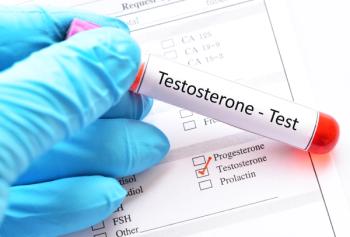
Study Connects Key Neural Mechanism to Bulimia Nervosa
Findings show relationship between binge eating and brain activation.
A study identified a key neural mechanism that may directly contribute to binge eating in patients with bulimia nervosa (BN).
In the study, investigators examined brain activation in individuals with eating disorders during these individuals’ efforts to control their eating behavior—making this study the first of its kind.1 They measured activation in 23 women with BN compared to 23 healthy controls using functional near-infrared spectroscopy (fNIRS) during both a standard go/no-go task requiring inhibition of button-pressing responses and a novel go/no-go task requiring inhibition of eating responses. Results showed that the participants with BN made more commission errors during both tasks,2 and that deficient activation of the medial and lateral prefrontal cortices—the brain regions that play a role in the control of behaviors, emotions, and cravings1—was identified in the participants with BN compared with healthy controls. BN subgroups who felt most strongly that they were binge eating during the task (n = 12) and those with the most severe and most frequent “loss of control” eating (n = 12) showed an abnormal reduction in bilateral ventromedial prefrontal cortex (vmPFC) and right ventrolateral prefrontal cortex (vIPFC) activation associated with eating response inhibition.2
“Our patients describe feeling like they just can’t stop themselves from taking that next bite or sip during binge-eating episodes, but we didn’t understand the neural mechanisms that might underlie that experience,” saidLaura Berner, PhD, assistant professor of psychiatry at Icahn Mount Sinai; principal investigator for the Mount Sinai Center for Computational Psychiatry and the Mount Sinai Center of Excellence in Eating and Weight Disorders; and lead investigator on the study, in a press release. “For the first time, this method has allowed us to measure what is happening in the brains of people with bulimia nervosa when they are trying to inhibit their eating responses, but cannot.”
Fewer than half of adults with BN recover after first-line treatment interventions. The development of more effective treatments has been hindered because the neural bases of the symptoms of BN are still not well understood.1 “Our findings suggest that eating-specific impairments in inhibitory control-related activation may serve as a new target for treatment,” Berner said in a press release. “In fact, we just learned that we received funding from the National Eating Disorders Association to test this idea. We will be using fNIRS-based neurofeedback to train women with bulimia nervosa to increase their own prefrontal cortex activation while eating, and we’ll test how that training impacts symptoms.”
References
1. Mount Sinai Health System.
2. Berner LA, Winter SR, Ayaz H, et al.
Newsletter
Receive trusted psychiatric news, expert analysis, and clinical insights — subscribe today to support your practice and your patients.

















